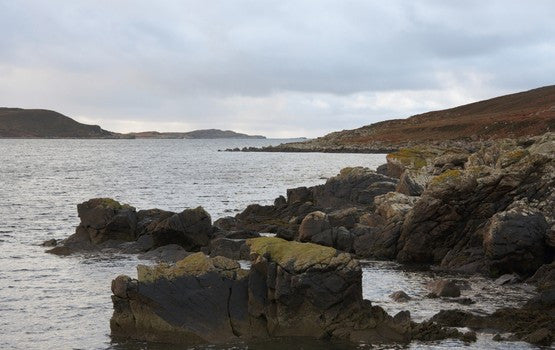
Article Detail
13 Jul
Scotland is a country whose heritage, culture and landscape has been shaped by its relationship with the sea that surrounds it. Scotland is, by nature, a coastal country. For most Scots, the sea is only ever a few miles away. Wherever in the country you happen to be, the sea is never more than forty miles away.
Their influence on Scottish landscape

The Scottish landscape is among the most geologically varied in the world. It is home to a huge number of different sorts of rocks and rock formations and has therefore been of great interest to a great number of geologists.
The sea has played a huge role in the formation of the Scottish landscape. The Scottish coastline, like the land in general, varies hugely from one coast to the other. The west coast is jagged and misshapen, comprised of a number of different promontories divided by sea lochs and inland lakes. The east coast, by contrast, is a great deal smoother and consists mainly of long, sandy beaches.
But how did this come to be? To find the answer, we must first consider Scotland’s position and how it came to be there. Millions and millions of years ago, much of Scotland was once a part of Laurentia, an enormous continental craton which is now constituted by North America and Greenland. It has now moved across the Atlantic and is now placed on the edge of the European continental shelf.
This is a position which places Scotland between some hugely contrasting oceanic forces. It is for this reason that the landscape of the country is so unique.
The first of these forces is the Gulf Stream, which is an oceanic current that flows from Central America northward, following the American coast before moving out into the Atlantic. Before it reaches the European continental shelf, it splits into two; one travels northward toward Scandinavia, the other heads southward toward Africa before circling back around again. The former of these two pushes warm water along the edge of the European continental shelf and in doing so ensures that the west coast of Scotland is kept relatively warm and wet. Conversely, water travelling southward from the Arctic Circle, ensures that the north eastern coast of the country is kept cooler.

Scotland’s entire coastline measures almost twelve-thousand kilometers – enough distance to travel all the way from Scotland to Australia in a straight line – and much of this distance is constituted by the country’s western coast.
But why, exactly, is the landscape so ragged? The answer lies in glaciation. The last ice age saw what is now Scotland covered in huge sheets of frozen water. As the planet began to heat up again, these sheets began, slowly, to melt into the Atlantic. The movement of this vast quantity of ice over hundreds of years literally tore apart the landscape, creating the tortuous coastline we see today, comprising some eight-hundred islands.
These islands are hugely varied in their shapes, sizes and makeups. They are formed into several groups. There are the inner and outer Hebrides, to the west of the country and there are the Shetland and Orkney islands to the north. The landscape of these islands is hugely varied; some of them are craggy and mountainous while others are completely flat. Some of them are even a little of both. The seas that divide them are equally varied; some of the currents are relatively mild, while others are severe.
The Gulf of Corryvreckan, a body of water which separates the islands of Jura and Scarba, is perhaps the most extreme example. There, a strong current from the Atlantic meets an unusual seabed to create a strait which the Royal Navy’s pilot guide for the region is described as “very violent and dangerous.” The gulf is home to the world’s third-largest whirlpool.
Scottish Sea Wildlife
As one might expect from a country whose geography is so varied, Scotland’s coastline is host to a tremendous number of different species of flora and fauna.
This variety is displayed most in special areas known as tide-swept channels. In these places, tidal forces are at their most acute and shape the topography of the ocean floor to the extent that massively increases the diversity of the local fauna and flora. These tidal forces move microscopic nutrients through the islands, allowing the sealife to thrive. They also carry away the finer particles of mud, leaving only coarser rocks on the seabed, while leaving nearby mudbanks relatively untouched.
Different species are suited to different conditions on the seabed. Seaweed, for example, tend to thrive more in shallower water, where the current is strong. Other plant species, like kelp, tend to grow best on bedrock and larger boulders. Beneath the seabed, burrowing worms and molluscs will seek to escape the attention of the predators that prowl the waters overhead.
In deeper water, the sunlight is more restricted. Plant life is therefore unable to grow and so the ocean floor is opened to a variety of different animal species – though not always the sorts of animals we might think of! Sea mosses, barnacles and sponges tend to cover rocks, while larger crustaceans can take residence among the cracks and crevices between them. All of this life on the ocean floor, of course, attracts a large range of different species of fish.
Historically, this biodiversity has been preserved from human interference. This is owing largely to the severity of the tidal forces in these channels. Because these areas are so tricky to successfully sail, fishing boats have avoided them in favour of more generous waters – consequently, the animals and plant life that live in the tide-swept channels have been naturally protected from human interference.
This may be set to change though, as areas of strong tides are of interest to renewable energy companies looking to build tidal energy facilities. Pentland Firth is a particularly well-known tides-swept channel and one which has attracted considerable attention from a number of different developers looking to build such facilities.
The conservation authorities in Scotland therefore face the unenviable task of protecting the biodiversity contained in Scottish waters, while simultaneously recognising the importance of renewable energy in battling the broader threat of climate change.
Their influence on Scottish heritage and Culture

Being surrounded on all sides by sea – particularly the violent sort we have touched upon – has a dramatic influence on the development of a nation and of its people. It provides some security against invasion, for one thing; but it also protects its indigenous culture from the influences of foreign occupiers. This is in sharp contrast with England which has been invaded repeatedly throughout its history, Scotland on the other hand has proven more resilient – and some of its older traditions and practices are therefore better preserved (and, indeed, respected among native scots).
There are few things more inspiring than the sound of waves on a seashore – whether heard from a distance or on the beach itself. As we have seen, Scots have always lived within a few day’s walk of the sea – and many live within sight of it. It should come as little surprise, then, that Scotland has produced some of the finest poets, artists and musicians in history and that much of their work is explicitly inspired by the sea.
The sea is mentioned in the verse of Scotland’s most famous cultural export, Robert Burns, whose poem ‘My luve is like a Red Red Rose’ makes reference to all of the seas running dry. The sea’s influence has also found its way into many other mediums. Samuel John Peplow’s painting ‘A Rocky Shore, Iona’ brings to life the waves crashing against the rocks of an island in the Hebrides. In more modern times, the Scottish nautical influence is also evident in the work of crafts designers like Port and Lemon, while other designers seek to replicate the seafaring paraphernalia of bygone years – for which a great deal of fascination still remains.
And it is not just native Scots who have taken inspiration from the Scottish coastline – it has also contributed immensely to world culture as a whole. The German composer Felix Mendelssohn, for example, was inspired to write an overture, Die Fingalshöhle, after visiting the island of Staffa, where he found a cave which so inspired him that he immediately composed the first few bars of the overture and sent them on a postcard to his sister, Fanny, in order to demonstrate how deeply the Scottish island had inspired him.
Similarly, George Orwell wrote Nineteen Eighty-Four while in residence on Jura, another island in the Hebrides. Orwell nearly drowned in a prior visit to the region, where he and his son attempted to navigate the aforementioned Gulf of Corrvreckan and in doing so ended up shipwrecked on a skerry. Despite becoming gravely ill with tuberculosis, Orwell was able to finish the novel and have it published the following year. While the oppressive content of the most famous of all dystopian novels may have very little to do with the free idyll in which it was composed, it seems that something in the sea air carried Orwell through his illness and allowed him to get his greatest work onto paper.
 Free delivery on orders over £20
Free delivery on orders over £20






